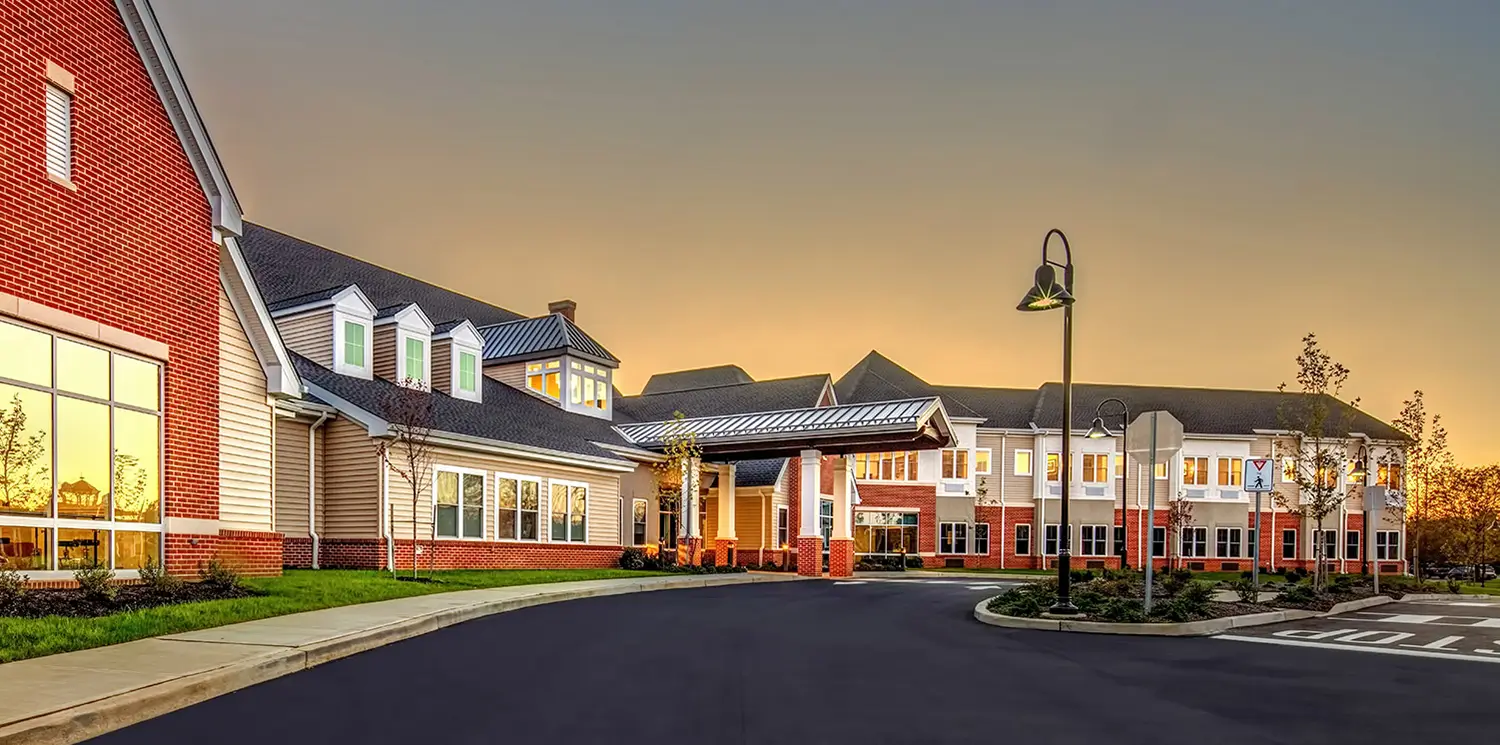
Making the decision to downsize into a senior living community is an important step in planning your retirement future. As you begin visiting communities and comparing options to select the one that’s right for you, you’ll quickly discover how much there is to learn about the different community types.
Two popular senior living options you might consider are a rental community and a Life Plan Community. Each offers advantages and disadvantages depending on your unique circumstances, so it’s a good idea to understand how each type of community operates and what you should expect as a resident.
What is a rental community?
As the name suggests, the homes in this type of community are offered under a rental agreement. Many offer only one level of living: independent living, assisted living, memory care. Others offer multiple levels, with independent living and assisted living being more prevalent than those with memory care and/or skilled nursing. Residences tend to be multi-unit dwellings like apartments or condos, although sometimes single-family homes are available.
What is a Life Plan Community?
A Life Plan Community (which you may also hear referred to as a “continuing care retirement community”) offers various living options and healthcare services, enabling residents to transition seamlessly from one level of care to the next as their needs change. For example, at The Moorings at Lewes, our continuum of care includes independent living, assisted living, memory care, and skilled nursing and rehabilitation.
Independent living residents at The Moorings can choose from charming cottages or spacious one- and two-bedroom apartments. Assisted living residents can choose from one- or two-bedroom apartments with convenient features like a kitchenette, living room, and private bath, while memory care residents have the choice between private or semiprivate suites.
Many seniors choose to enter a Life Plan Community’s independent living area early in their retirement years. This way, they can take full advantage of the lifestyle, with the comforting knowledge that they won’t have to uproot their lives if they need more care at a later time.
Are there similarities between a rental retirement community and a Life Plan Community?
Both types of communities generally have age restrictions, meaning you must qualify for residence by being over a certain age. This is advantageous because it means your neighbors are in a similar age range, and you can build social connections and enjoy the community surrounded by people who share your interests and lifestyle preferences.
Although the scale and approach may vary, both rental retirement communities and Life Plan Communities are likely to offer services and amenities like maintenance, housekeeping, meals, and social activities.
How does a Life Plan Community different from a rental community?
The most significant difference is that a Life Plan Community is contractually bound to provide additional levels of care to a resident whose needs evolve over time. Conversely, if a resident of a retirement rental community needs care beyond what the community provides, they’ll have to move to a new facility and continue to pay rent while they’re receiving care elsewhere (potentially far away from a partner), which can put a great strain on finances. At a Life Plan Community, you may be able to continue living together if one of you needs a new level of care (or at least be a short walk away). Because of the promise for long-term care, many Life Plan Communities have medical and financial eligibility requirements that most rental communities don’t.
Another major difference is how – and how much – you pay to move into a certain type of senior living community. With a retirement rental community, in addition to monthly rental payments, you can expect to pay a one-time deposit or community fee; how much, if any, of the fee is refundable depends on the community.
A Life Plan Community will require an entrance fee, as well as a monthly service fee. At The Moorings, we offer two contract options for the entrance fee, which provides some flexibility for your personal financial goals. One option allows for a portion of your principal to be returned to your estate when you are no longer a resident here. The other requires less upfront, so you retain greater liquidity of your financial assets.
Lifelong Wellness and Peace of Mind
Comparing Life Plan Communities to rental communities, you may not be surprised to learn that the former tend to offer access to a broader range of wellness programming designed to promote physical and mental health. We invite you to contact us and arrange a visit to The Moorings, so we can introduce you to our award-winning senior wellness program and show you how senior living can bring you peace of mind.

